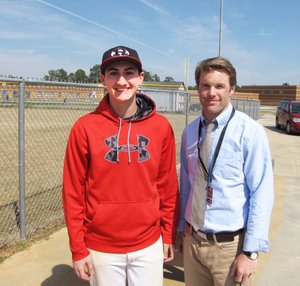Sixteen-year-old Atlanta-area first baseman Alex Norwood hit a dramatic grand slam in a winning cause on March 21, but his truly game-changing hit was none that never appeared on the scoreboard.
In a junior varsity game at Newtown High, the Rockdale County High junior came through in the clutch in a way that mattered even more when, between the second and third innings, home plate umpire Woody Reagin suffered a massive heart attack and collapsed.

This month's Youth Sports Heroes honors two high school students - one a wrestler, one a baseball player - who were in the right place at the right time to save the lives of an umpire and fan who, but for their training and quick thinking, might have died.